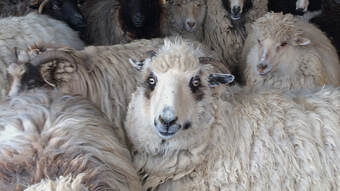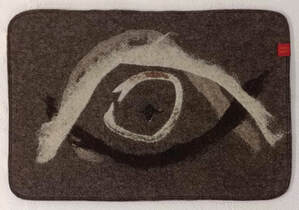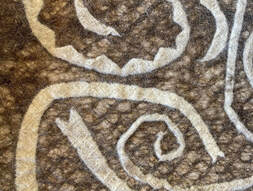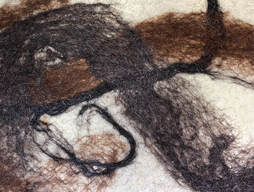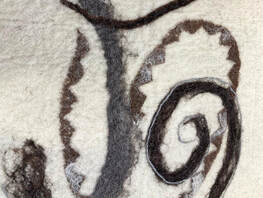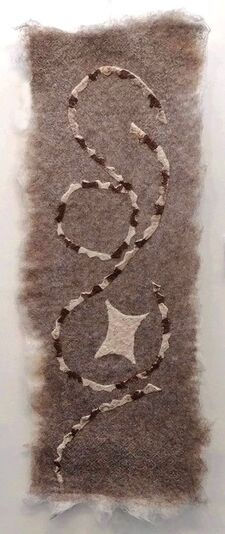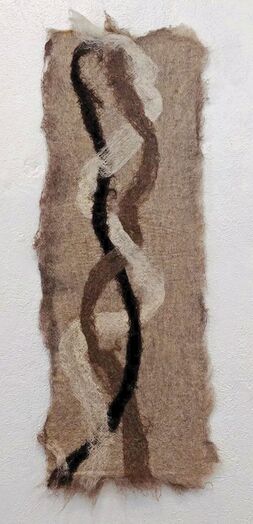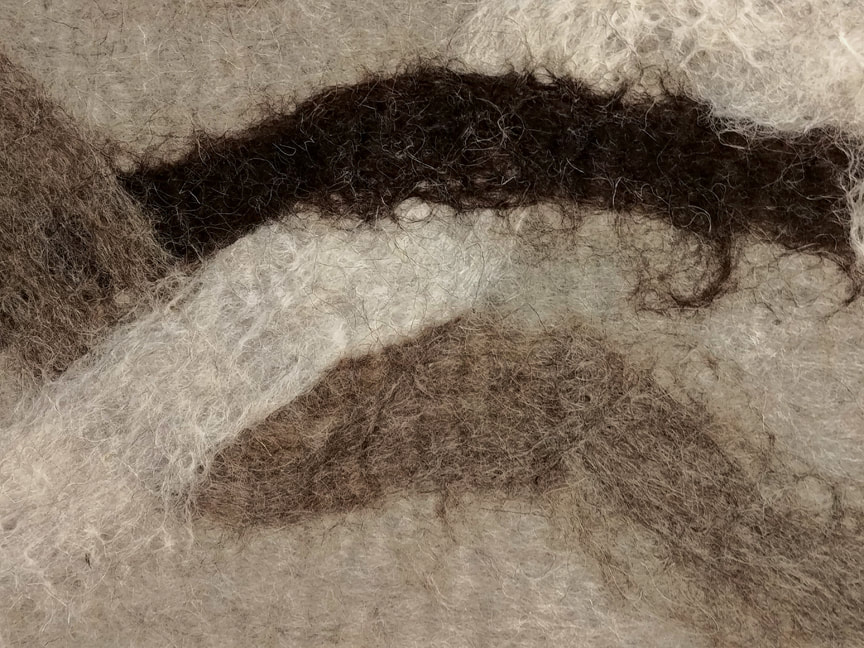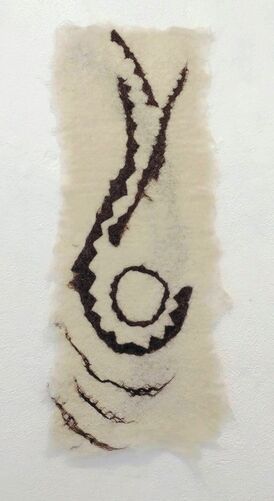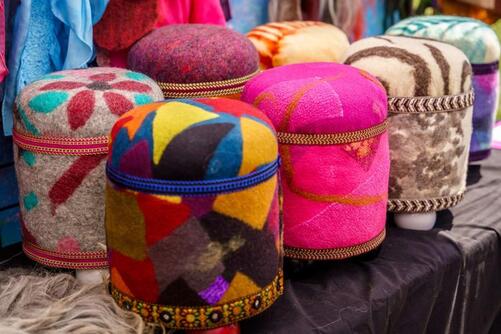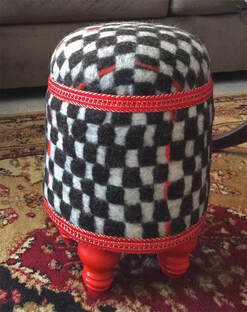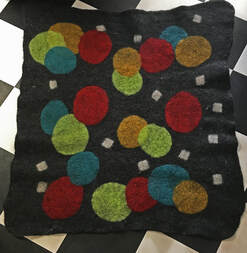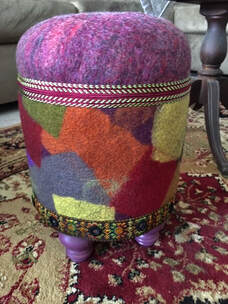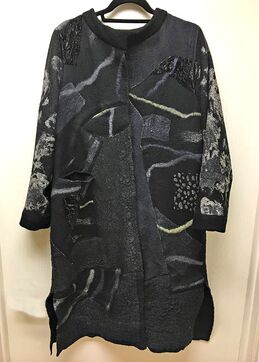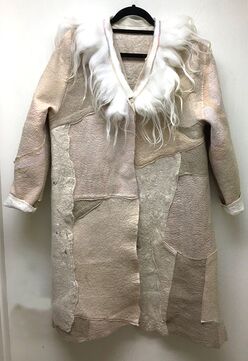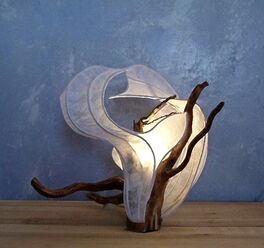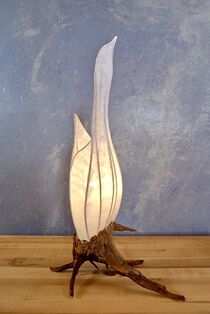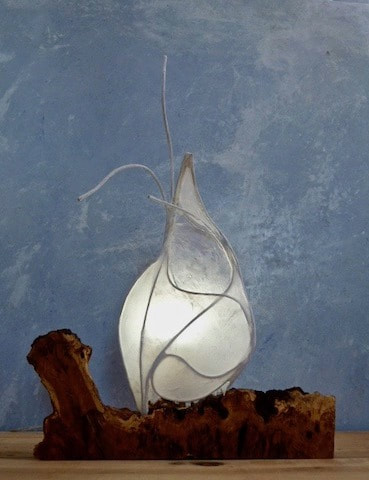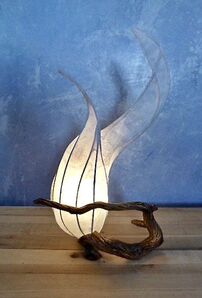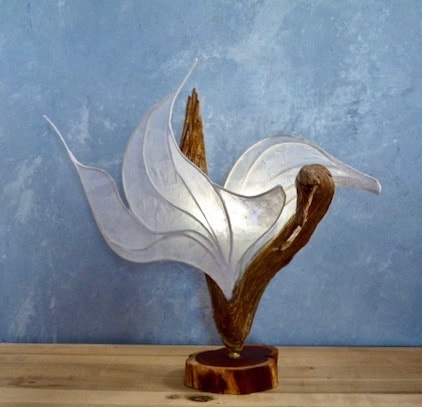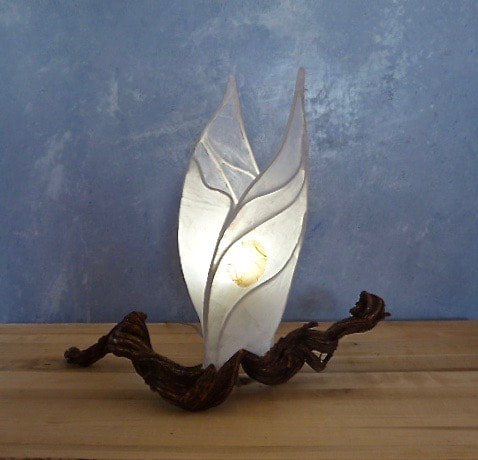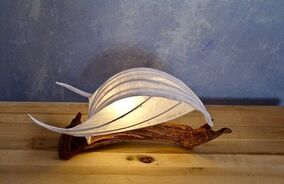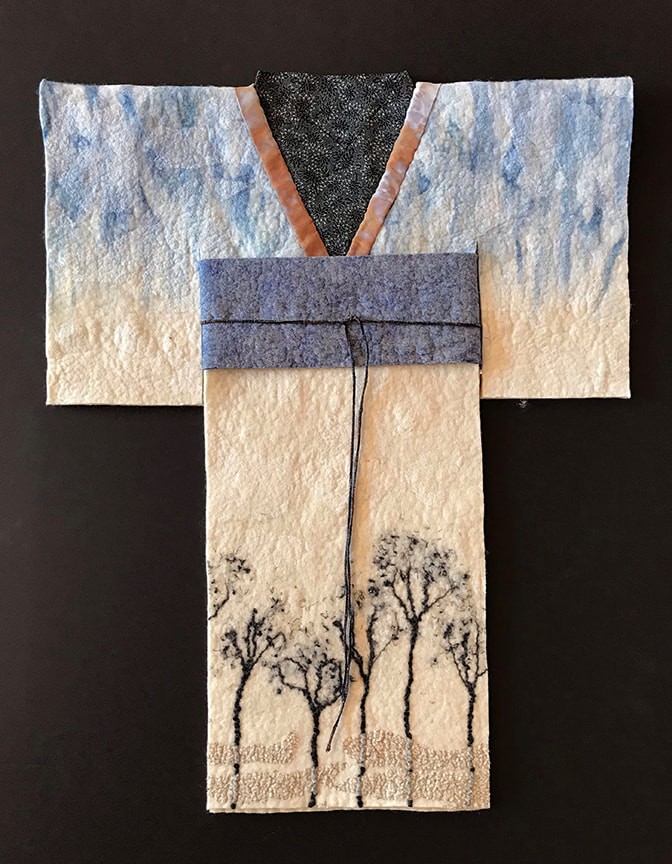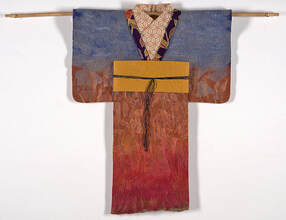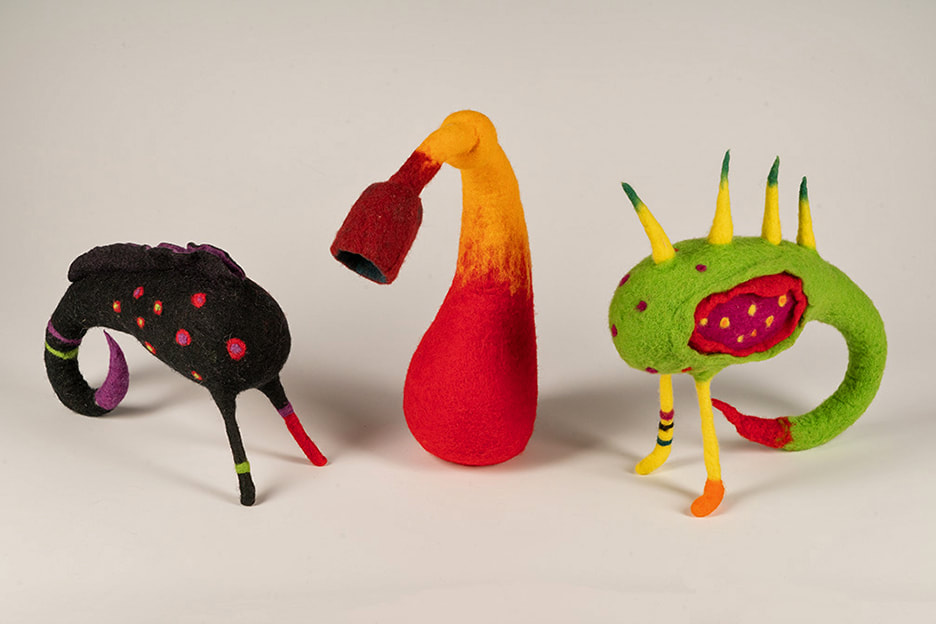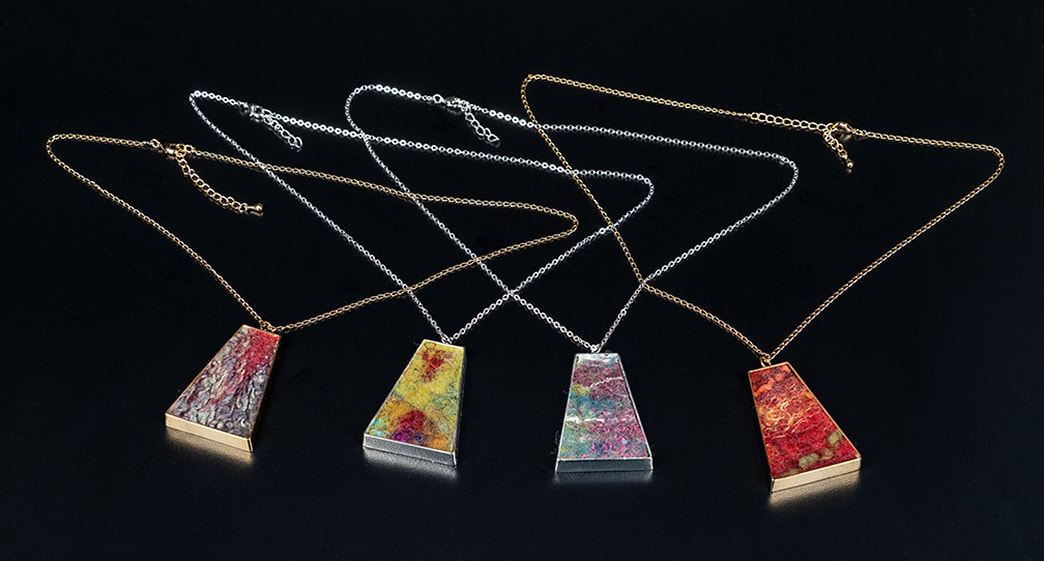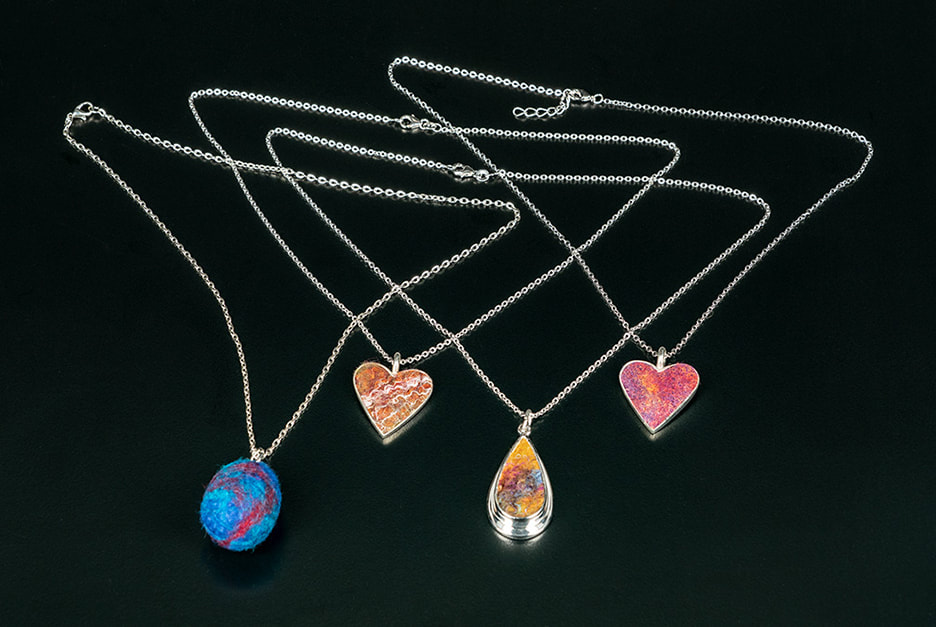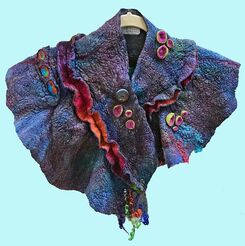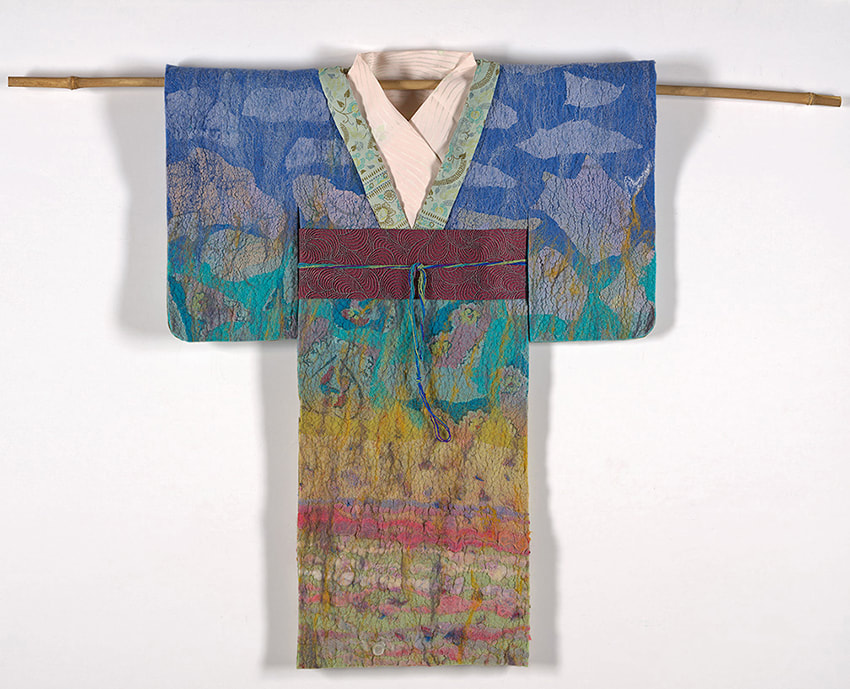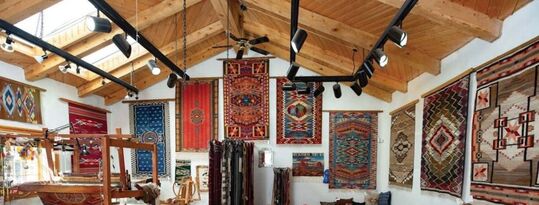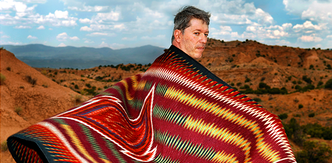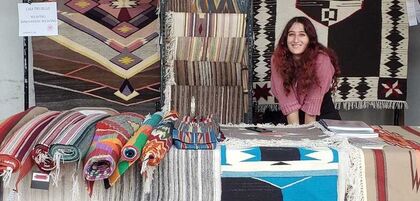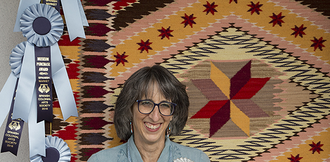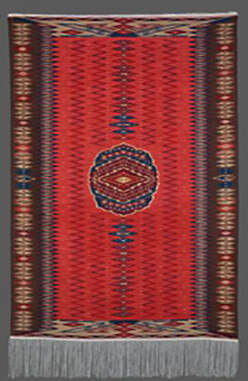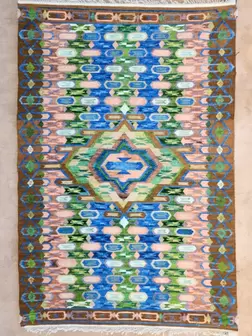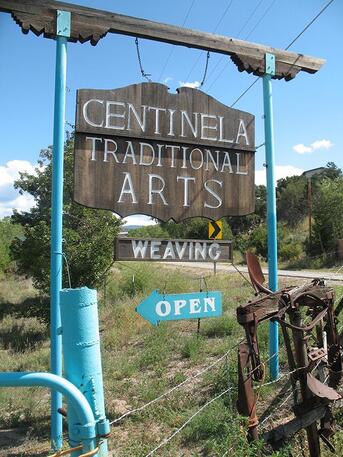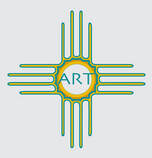N O R T H C E N T R A L R E G I O N
CHIMAYO, DIXON, PEÑASCO, CHAMISAL, TAOS, QUESTA, ABIQUIU, EL RITO, CHAMA & TIERRA AMARILLA AREAS
ARTISTS LISTED ALPHABETICALLY
Click on the Images to Enlarge
Click on the Images to Enlarge
LANA DURA (LLC) – MINNA WHITE
Taos
Giving Sheep A Job!
Lana Dura wool felt rugs. Perfect for the hearth (wool is fire resistant) or bedside or bath mats or pet beds.
Thick Navajo-Churro wool, vacuum or hand wash, reversible and all natural wool.
FOR A CURRENT LIST OF AVAILABLE PRODUCTS, VISIT LANA DURA'S WEBSITE
Thick Navajo-Churro wool, vacuum or hand wash, reversible and all natural wool.
FOR A CURRENT LIST OF AVAILABLE PRODUCTS, VISIT LANA DURA'S WEBSITE
|
|
I use only wool from Navajo-Churro sheep, the breed which I raised since 1990. These sheep give me a sophisticated and wonderful
natural color palette. About the Navajo-Churro Sheep
This historic and now rare breed arrived in this hemisphere with the Spanish Conquistadores in the 1500s. I am fortunate enough to have found their wonderful fiber and this thoroughly sustainable material enables me to Give Sheep a Job Lana Dura LLC
Minna White |
Making felt is fun!
Lana Dura uses natural colors of Navajo-Churro wool (imagine: unusual browns, grays, white, black together reflecting the landscape colors of the Southwest). We create felt products with hot water and friction: Floor Rugs, Wall Art and home accessories. Everything is hand-washable, hand-made in Taos and reversible, with unique designs fitting all decor schemes. In addition, we host felt-making workshops where everyone makes their own 18" by 48" runner and we have fun! |
ANNE VICKREY EVANS
Handmade Felt Wearables
Tierra Amarilla
The 38th Annual Taos Wool Festival 2021
TAOS NEWS
Wool Festival recap
by Haven Lindsey Oct 7, 2021 Updated Nov 11, 2021
Following rain showers and snows in the highlands, the sun welcomed the fiber artists to Taos for the
38th Annual Taos Wool Festival and the colorful, whimsical atmosphere was downright poem-inspiring.
For the range of arts that come from spinning, roving, felting, weaving, knitting and more, there seems to be
a fiber art for everyone. Beginners learned about rug punching and experts compared qualities and colors of
dyed fabrics while noticing intricacies that only trained eyes could see. Creativity abounds. Anne Vickrey Evans
and her husband build felting machines from their home in Tierra Amarilla that felt artists use. Evans noticed the
metal they order for their machines was delivered in cylindrical tubes and she asked her husband to save them
"I wasn't sure why but I knew there was something there I could eventually use," she explained. As creatives often experience, within time those tubes sparked an idea and the brightly colored, felted 'tuffets' were the result.
When asked what a tuffet is, Evans smiled and responded,
"You know…Little Miss Muffet sat on a tuffet."
TAOS NEWS
Wool Festival recap
by Haven Lindsey Oct 7, 2021 Updated Nov 11, 2021
Following rain showers and snows in the highlands, the sun welcomed the fiber artists to Taos for the
38th Annual Taos Wool Festival and the colorful, whimsical atmosphere was downright poem-inspiring.
For the range of arts that come from spinning, roving, felting, weaving, knitting and more, there seems to be
a fiber art for everyone. Beginners learned about rug punching and experts compared qualities and colors of
dyed fabrics while noticing intricacies that only trained eyes could see. Creativity abounds. Anne Vickrey Evans
and her husband build felting machines from their home in Tierra Amarilla that felt artists use. Evans noticed the
metal they order for their machines was delivered in cylindrical tubes and she asked her husband to save them
"I wasn't sure why but I knew there was something there I could eventually use," she explained. As creatives often experience, within time those tubes sparked an idea and the brightly colored, felted 'tuffets' were the result.
When asked what a tuffet is, Evans smiled and responded,
"You know…Little Miss Muffet sat on a tuffet."
Anne’s first introduction to felt was as a child visiting her grandparents in Norway where nearly everyone had
a pair of felt boots. When a Danish friend visited her in 1982 she learned the technique for making felt slippers. From that point on, felt became a focus for her and she eventually wrote five books on the subject, made two videos under the name “Anne Einset Vickrey”
a pair of felt boots. When a Danish friend visited her in 1982 she learned the technique for making felt slippers. From that point on, felt became a focus for her and she eventually wrote five books on the subject, made two videos under the name “Anne Einset Vickrey”
CLÔDIE FRANÇOIS
MESDAMES CARTON
Chamisal
|
T R I B U T E
Claude Therese Francois Clôdie François 1949 - 2022 Mama Clodie François became an ancestor on Sunday, September 4, 2022 at 5:45p. –Quetzal François is with Clodie Francois. 🌼🌼🌼🌼🌼🌼🌼 🌼 To Read the Tribute..... |
I am nuts about trees,
I even speak to them...and to the branches I cut along the arroyos to create my lamps. I ask: speak to me, tell me one of your stories, some dream, some fantasy. Shutting the buzz in my mind, I listen with my eyes, until my hands follow & shape with colorful papers, the story they whisper. Each new lamp is a duo between the peculiar nature of the branches and my own imagination. Visit Clôdie François's Listing on
The New Mexico Artist Directory |
Studio located in Chamisal,
New Mexico, on the "High Road to Taos” Open all year round by appointment Phone: (505) 689 1194 [email protected] Whimsical Design Furniture
& Lamps mesdamescarton.com Facebook Instagram Represented by: www.gauchoblue.com (Peñasco) |
LISE POULSEN
Peñasco
|
|
Lise and her husband Nick own
Gaucho Blue Fine Art Gallery in Peñasco - in the mountains south of Taos. |
IRVIN, LISA & EMILY TRUJILLO
Chimayo Weavers - Centinela Traditional Arts
Chimayo
Chimayo Weavers – Centinela Traditional Arts is a tapestry gallery located in Chimayo, New Mexico,
specializing in hand woven tapestry wool products using natural dyes, custom-dyed yarns, handspun yarns,
and the traditional Chimayo and Rio Grande weaving styles. The weaving gallery is operated by
Irvin and Lisa Trujillo and (8th Generation) Emily Trujillo,
award-winning weavers and whose work has been shown in, and collected by, museums
across the United States, including the Smithsonian.
specializing in hand woven tapestry wool products using natural dyes, custom-dyed yarns, handspun yarns,
and the traditional Chimayo and Rio Grande weaving styles. The weaving gallery is operated by
Irvin and Lisa Trujillo and (8th Generation) Emily Trujillo,
award-winning weavers and whose work has been shown in, and collected by, museums
across the United States, including the Smithsonian.
|
IRVIN TRUJILLO
As a seventh-generation Rio Grande weaver living in Chimayo, New Mexico, my work has evolved from the traditional styles of my forefathers. I use design ideas from historic Rio Grande weavings of Northern New Mexico and add my own aesthetic by combining old ideas with my own vision. My pieces may interpret my Hispanic history and culture, document events of the modern world, or make observations based on what is happening in my life. Most of my weavings develop spontaneously, as my father taught me. Executing an idea means discovering and overcoming the limitations imposed by traditional techniques and looms, and adopting, or perhaps changing, solutions as the weaving progresses. The binary logic of weaving makes the creative process and the execution of ideas inseparable. Not knowing the final outcome makes each weaving a journey. EMILY TRUJILLO
8TH Generation Chimayo Weaver Emily Trujillo
Timeless Enchantment Two 20X60" pieces seamed together making a 40X60" blanket. Naturally dyed with indigo, chamisa on indigo, logwood, and commercial dyes. Website: chimayoweavers.com
Facebook: www.facebook.com/ChimayoWeavers Etsy: www.etsy.com/shop/centinela Wordpress Unfolding Tradition: Lisa Trujillo |
LISA TRUJILLO
Lisa Trujillo learned to weave after marrying Irvin in 1982. She has spent the years since then immersing herself in learning traditional design systems as well as finding new ways to use traditional techniques and materials. She has become adept at spinning churro wool quickly into a yarn ideally suited for her richly-textured tapestries and blankets. Her occasional weaving workshops have helped her develop teaching materials that she hopes to eventually make available beyond just her workshop students. Irvin Trujillo
Gold Circle Is very much true to the historic Saltillo serapes. The scalloped circle is reminiscent of some of the classic 17th century Mexican Saltillos. This piece uses richly-colored, hand-dyed merino wool and silk blend yarns acid dyed by Irvin and a gold metallic yarn to give it a bit of a discreet sparkle. This is much finer than most of what we do, with a weft count of 64 (as opposed to the normal 26), but it uses the usual 8 ends or inch of Chimayo blankets. It measures approximately 48 by 88 inches. Lisa Trujillo
A Verdant Spring All hand-spun Churro, all natural dyes, Brown (natural sheep color) Peach (naturally dyed with madder root) Greens (naturally dyed with indigo on chamisa) Blues (naturally dyed with indigo) 52"X80" |
|
Located in Chimayo, New Mexico, on the "High Road to Taos"
Centinela Traditional Arts, 946 State Road 76, Chimayo, NM 87522 Phone: (505)351-2180 Open: 9-6 Monday through Saturday, and 10-5 on Sunday. Email us at: [email protected] Directions to Centinela Traditional Arts From Santa Fe: North on 84/285 to Poajuaque/Nambe, past the Cities of Gold Casino. Turn Right on 503. You'll travel East for several miles, through badlands... Turn Left on 98. You'll drop down into Chimayo, and 98 will end at 76. Turn Right on 76. You'll travel one mile East and will see a large wooden sign on the left hand side of the road that says "Centinela Traditional Arts". |
